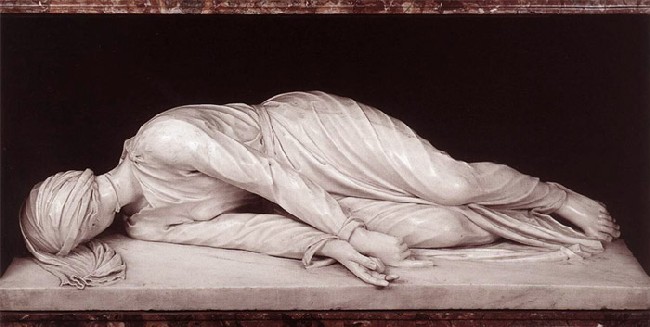“Dog bites man” is not news, but “man bites dog” is. Using that test, the following article from the St. Petersburg Times newspaper may not be news...... yet! But I know that I could learn from this dog.
Dog Prays
Tuesday, March 25, 2008
Dog Prays - Can Conversatio Morum Be Far Behind?
Monday, March 24, 2008
Benedictine Sisters of Perpetual Adoration
I really like the Benedictine Sisters of Perpetual Adoration a lot.
They have an interesting history.
It began in Maria Rickenbach, Switzerland, in the 1500s when a wooden statue of the Virgin and Child was miraculously preserved from fire.
Maria Rickenbach became a place of pilgrimage, and later in 1853, two women began a Convent there for perpetual adoration.
In 1874 five of the sisters from the Maria Rickenbach convent were asked by Benedictine Fathers in Conception, Missouri, USA to help minister to the immigrant settlers.
Today, there are about 100 Benedictine Sisters of perpetual adoration with houses in Clyde, Missouri; Tucson, Arizona; and Dayton, Wyoming.
They have one of the most beautiful and functional Benedictine web sites, and are known for their Online Shops stocked with super items you should buy anytime you need those products, Famous podcasts of the Divine Office which will place you inside your favorite monastery; and a Video on Benedictine Princples that is first rate.
The video may seem like just an oveview of the Benedictine Sisters, but you can make a checklist of every essential Benedictine tradition and monastic principle in the 1,800-years of Christian monasticism by watching the sisters in this 3-minute video. Not bad.
And, it is presented with an easy grace and wecloming spirit that marks the Benedictine life.
I loved the picture of the sister sitting in front of her computer (1 min 36 secs. into the video). She is looking into the future.
Tip o' the hat to the Benedictine Sisters of Perpetual Adoration.
Sunday, March 23, 2008
Oblate Spring launched today.
Well, the final construction debris has been swept from the Oblate Spring web site and it has been launched as of Easter. There are additions stacked and ready to be brought to the site, however.
Oblate Spring recommends books and has lots of opportunities for reading. That reminded me of this wonderful passage from a book published in 1930, and quoted here in its famous 1962 version:
“2. READING
“Saint Benedict's legislation on reading has not always secured the attention it deserves. Its full implications can only be grasped by those who follow with some care a reconstruction of the daily life in Saint Benedict's monastery and discover that little less than four hours were daily devoted to reading, as compared to some six given to work. ....
"Among the direct descendants of Saint Benedict, reading and work have in a manner coalesced. They still remain real elements in every true Benedictine life, and their primary influence must always be upon the soul of the individual monk, but their secondary influence has passed far beyond the cloister into the civilization and education of the West.”
Quote from: “THE BENEDICTINES,” A DIGEST FOR MODERNS
BY DOM DAVID KNOWLES
Monk of Downside Abbey
Introduction by MARION R. BOWMAN, O.S.B.
Abbot of Saint Leo Abbey
THE ABBEY PRESS
Saint Leo, Florida
1962
Thursday, March 20, 2008
About this blog. A Benedictine oblate blog
This Oblate blog is a companion to my web site OblateSpring.com.
If you are searching for a deeper spirituality, you may find it in the ancient spring of Christian monastic practices going back to the desert fathers. Oblates can also trace their manner of living to the early days of Christianity and early Church fathers.
Oblates come from all religious backgrounds. Of the 25,000 oblates in the world, about half are in the United States.
My web site OblateSpring.com answers your initial questions about oblate monasticism and has Links to Oblate Resources.
This blog is about my oblate life.
Together this blog and the OblateSpring.com web site provide another aspect of how to explore the spirituality of being an oblate.
Oblate monasticism is not for everyone, but you may have a monastic inside of you just trying to bring you into the silence.
Someone asked me why I write this blog. There are four main reasons:
1. HELP OTHERS WHO HAVE FOUND THE STREAM AND ARE JUST STARTING OUT TO FIND ITS HEADWATERS. This blog may give a mark or guide to people who want to know more about being a Benedictine oblate, (Do you live in a monastery? Do you wear funny clothes? Do you have to be celibate? Do you have to be Catholic? Is there some secret teaching only oblates know? — the answer is “no” to all of those questions).
2. A RECORD OF MY SPIRITUAL LIFE. This blog provides a handy record and personal journal of my oblate experiences.
3. CLARIFIES MY THOUGHTS. I often read and study about a topic before I write about it, even if the researched point is only mentioned in passing in the blog. The process of study, thinking, and writing helps clarify monastic principles in my own heart.
4. DIFFERENT SPIRITUAL TRADITIONS ARE SOURCES OF INSIGHTS — OFTEN HUMILITY. This blog is also an exciting way to meet people with similar interests from other spiritual traditions. I find myself saying, “that tradition is not for me, but praise God I have been able to learn about it and see yet another way that God’s great power and love is expressed.”
Regardless of whether learning about oblate monasticism is simply to check off, "No, my spiritual home is not in any form of monasticism," or is to perhaps give form to a deep sense of direction within you, I pray for peace to your heart. You are welcomed as Christ.





